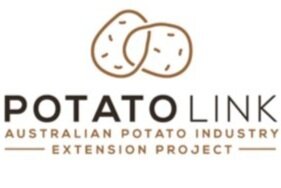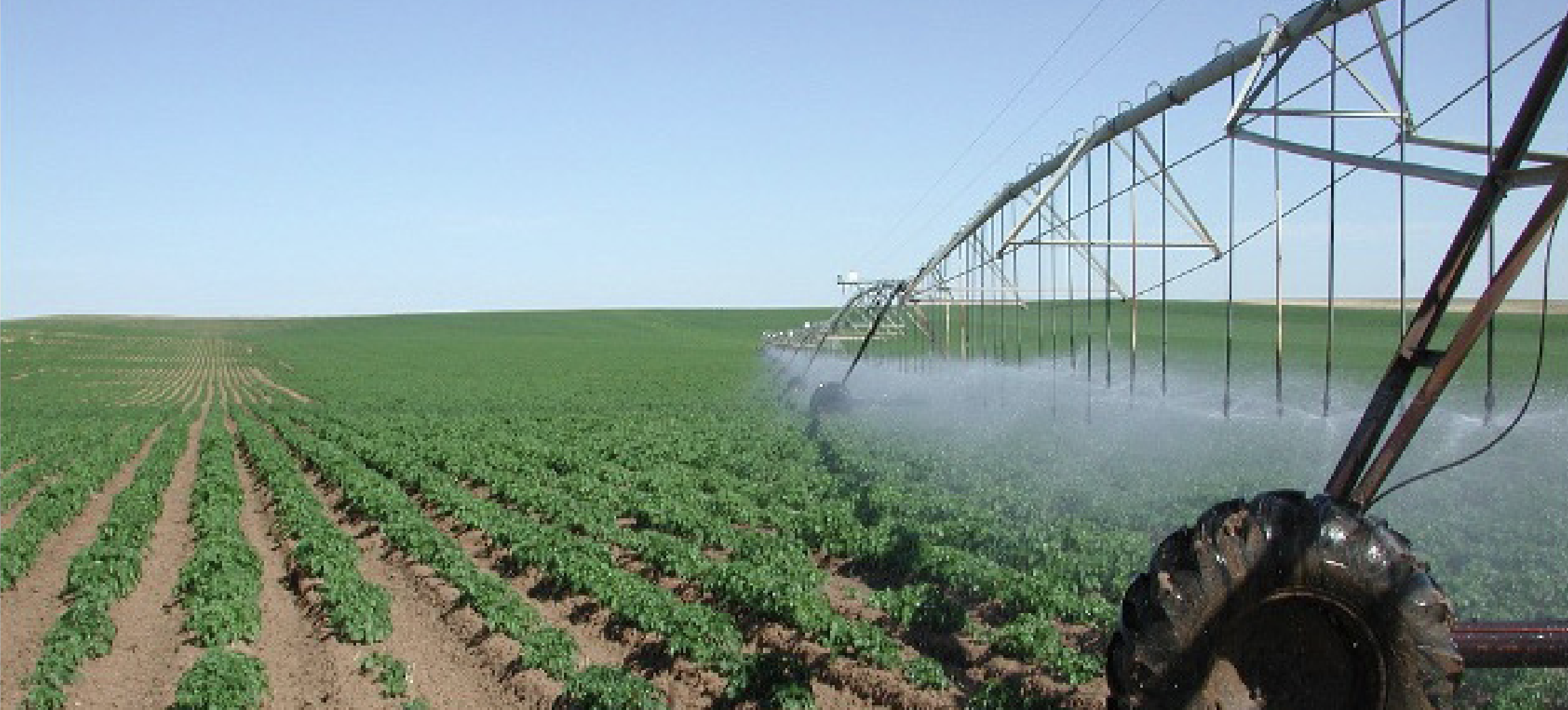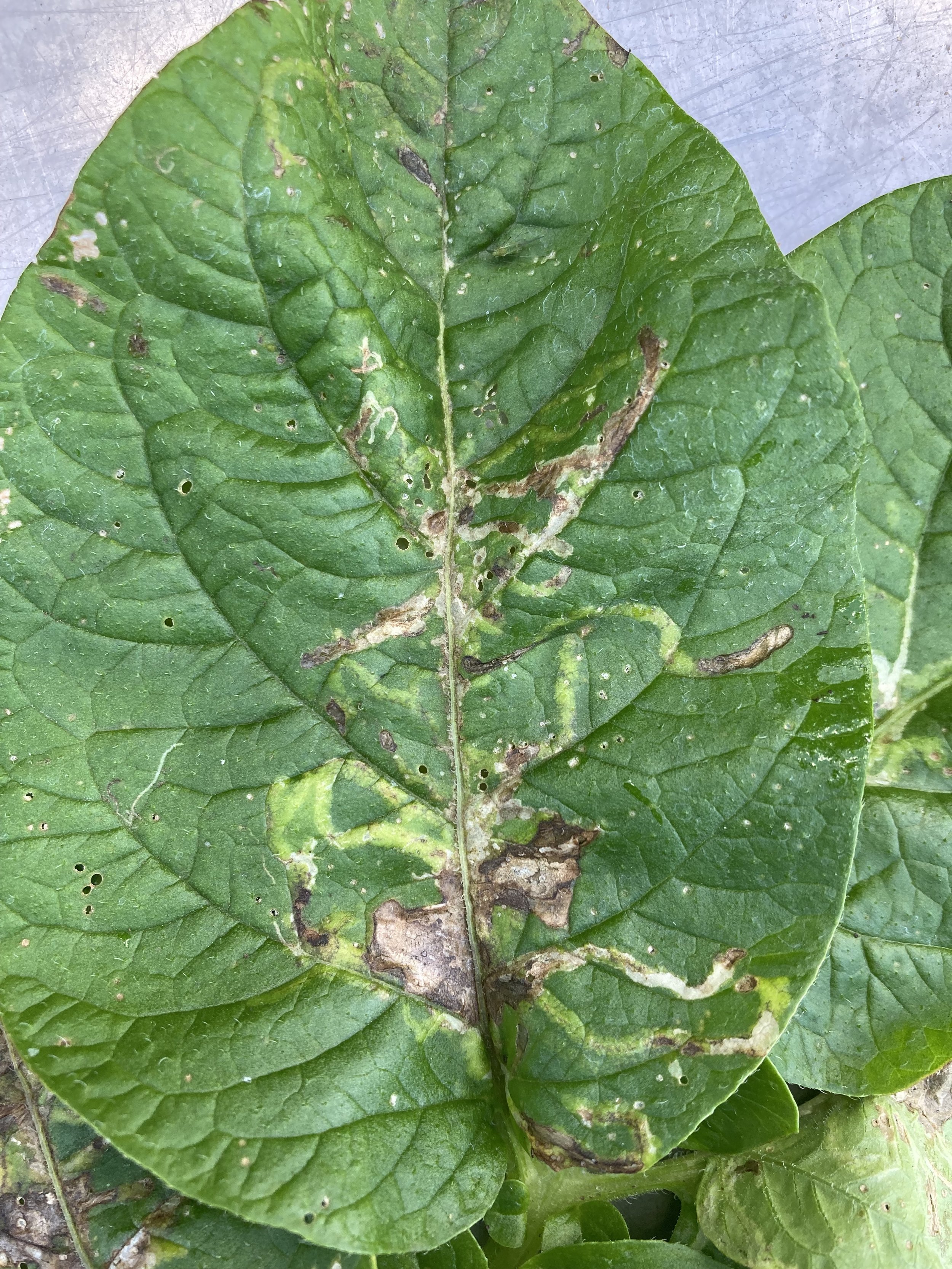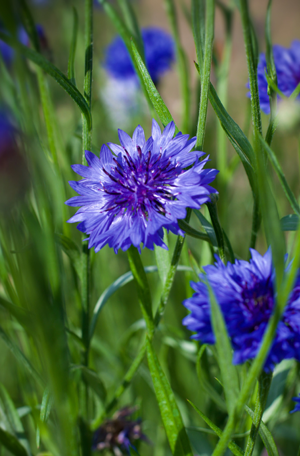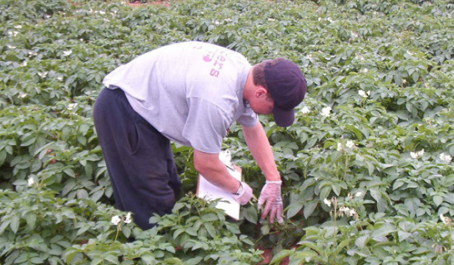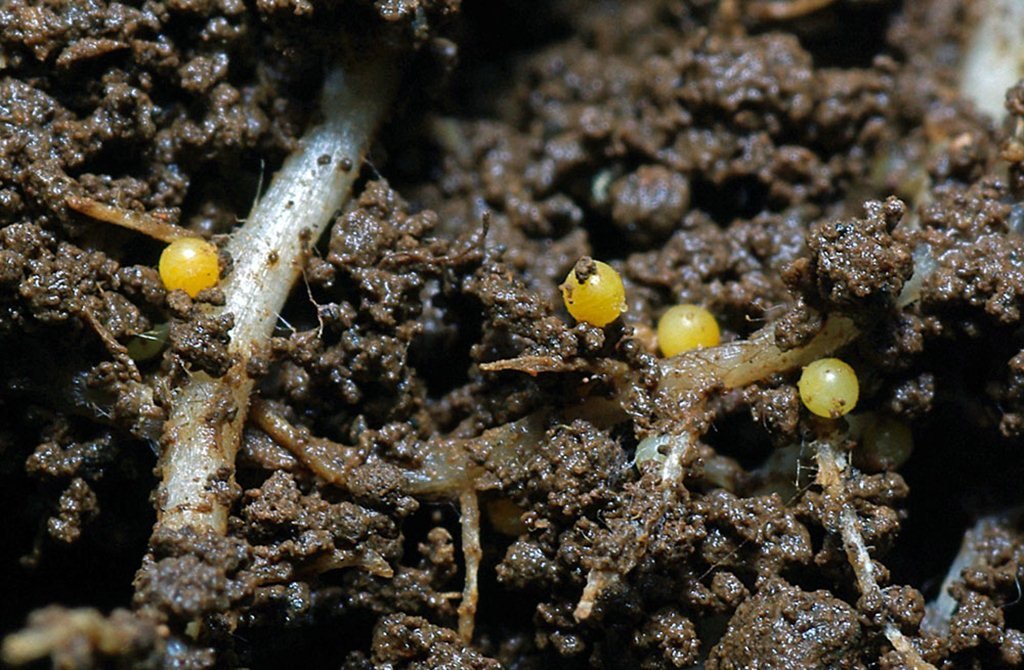
Insects
Just like us, plants have evolved sophisticated mechanisms to defend themselves against pests and pathogens. One of the most intriguing strategies is 'Induced Systemic Resistance' (ISR). Specific microbes or environmental triggers can activate the plant defences, improving its ability to ward off attack or cope with stress. And we can help that happen. Read the full article in Issue 13 of PotatoLink magazine.
In the PotatoLink magazine, the Spud GP answers the question: I’ve noticed a few leaves getting chewed on plants around the edge of the paddock, but I can’t see any insects on there – what’s causing this?
During the Australian summer, potatoes are susceptible to various pests and diseases that can thrive in the warm and humid conditions. Get the mini guide in this PotatoLink Magazine article.
Three new species of Lyriomyza leafminer flies are now present in Australia including, American Serpentine Leafminer (ASLM (Liriomyza trifolii)), Serpentine Leafminer (SLM (Liriomyza huidobrensis)), and Vegetable Leafminer (VLM (Liriomyza sativae)). Read more in this PotatoLink magazine article by Shakira Johnson, AUSVEG.
Australian Seed Potato Industry Certification Authority (AuSPICA) has introduced an innovative solution to monitor insect vectors in potato crops. Passive suction traps installed in the field take samples of potential virus vectors, which are then sent to Intertek laboratories for rapid DNA analysis. The data developed builds information on the presence of potato virus vectors during the growing season and in the long term, builds trends on vector populations in potato growing regions.
Read the full story in Issue 10 of PotatoLink magazine.
In Issue 07 of PotatoLink magazine, Ryan Hall explains that the vast majority of insects are harmless, some are beneficial and a very few are damaging to potato crops. Encouraging beneficial insects into the crop can save time and money, avoid negative side effects, and prevent development of resistance.
This webinar on tomato potato psyllid (TPP) and zebra chip was delivered by Dr Melinda Moir, senior laboratory scientist in entomology at the Department of Primary Industries and Regional Development (DPIRD), and John Jackson, director of Potatoes New Zealand.
Watch this panel discussion and the last soil biology masterclass with potato growers across Australia and see many of your questions answered.
In this second soil biology masterclass, Dr. Calum Wilson explains about the good, the bad and ugly ones in the soil and how they interact, and what you can do to keep them in balance to protect your potato crop.
Albert Schirring covers the role of biologicals in soil health and the opportunities in enhancing crop productivity in potatoes.
While tuber moth can be a serious pest of potatoes, it can also be effectively controlled using agronomic practices and biological controls. This new factsheet by Dr Paul Horne describes how growers can continue to manage this pest with minimal chemicals.
This presentation by Dr Paul Horne, entomologist and owner/director of IPM Technologies outlines the elements of Integrated Pest Management (IPM) in any crop but particularly in potatoes. The most important biological, cultural and chemical options available to growers are described and specific examples are given from Australian potato production.
Catch up on Day 1 of the Australian Potato R&D Forum 2021, which focused on pest management.
Keeping up to date with international pest and disease threats is important. This ongoing project conducted a scan of the most recent research and development on international potato pests, research previously conducted in Australia on these pests and some ‘ready to use’ resources.
This Monitoring Psyllids and Psyllid Predators in Australian Potato Crops report by Tasmanian Institute of Agriculture (TIA) and Hort Innovation covers the different psyllid populations found and the levels of psyllid predators present.
Want to regain control over chemical-resistant pests? Aiming to reduce costs while meeting quality assurance requirements? This fact sheet covers the basics of protecting your crop.
Currently, Colorado potato beetles are not a pest in Australia. But if you’re interested in learning more, this factsheet by Plant Health Australia provides information on what the beetle is, what it looks like, what it can be confused with and how to protect your farm from the pest.
Soil insects are difficult to detect and can cause blemishes on potatoes that may reduce quality. This 2005 Hort Innovation report sets out guidelines on monitoring soil insects and potential management strategies that could be implemented.
Nematodes
Potato cyst nematodes (PCN) are one of the world’s most significant potato pests. Despite potentially devastating consequences on yield, symptoms are frequently subtle; the crop can just look a bit sickly or fail to thrive. This PotatoLink magazine article covers the lifecycle of PCN, impacts of PCN, and how Scotland manages PCN.
This 2004 report goes into the detection of potato cyst nematodes (Globodera rostochiensis) through DNA analysis. It also delves into different diagnostic tools that can be used to determine the presence of bacterial wilt (brown rot caused by Ralstonia solanacearum).
This 2001 report was the first study into the influence of crop rotations on disease and yields in the Australian potato industry. The report found that while there were some significant advantages to crop rotations there were still some disease issues that persisted.
